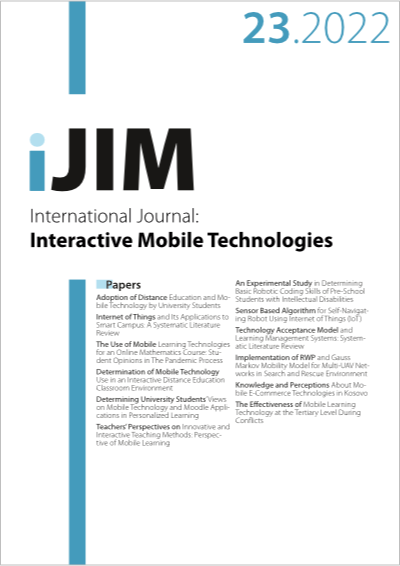Implementation of RWP and Gauss Markov Mobility Model for Multi-UAV Networks in Search and Rescue Environment
DOI:
https://doi.org/10.3991/ijim.v16i23.35559Keywords:
UAV, UAV Network, Mobility models, search and rescue enviroments, Gauss MarkovAbstract
Future generations of wireless networks are expected to heavily rely on unmanned aerial vehicles (UAVs). UAV networks have extraordinary features like high mobility, frequent topology change, tolerance to link failure, and extending the coverage area by adding external UAVs. UAV network provides several advantages for civilian, commercial, search and rescue applications. A realistic mobility model must be used to assess the dependability and effectiveness of UAV protocols and algorithms. In this research paper, the performance of the Gauss Markov (GM) and Random Waypoint (RWP) mobility models in multi-UAV networks for a search and rescue scenario is analyzed and evaluated. Additionally, the two mobility models GM and RWP are described in depth, together with the movement patterns they are related with. Furthermore, two-simulation scenarios conduct with help of an NS-3 simulator. The first scenario investigates the effect of UAV Speed by varying it from 10 to 50 m/s. the second scenario investigates the effect of the size of the transmitting packet by varying it from 64 to 1024 bytes. The performance of GM and RWP was compared based on packet delivery ratio (PDR), goodput, and latency metrics. Results indicate that the GM model provides the highest PDR and lowest latency in such high mobility environments.
Downloads
Published
How to Cite
Issue
Section
License
Copyright (c) 2022 Ass. Prof. Ali H. Wheeb, Marwa T. Naser

This work is licensed under a Creative Commons Attribution 4.0 International License.


